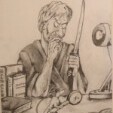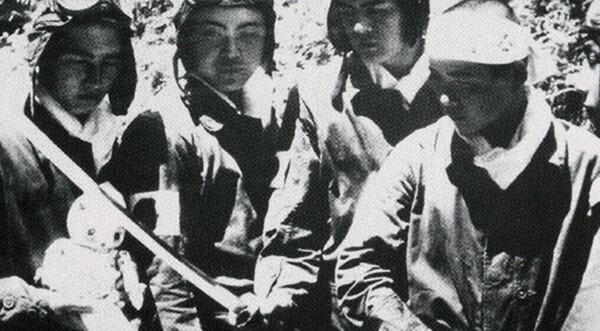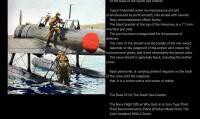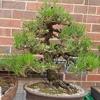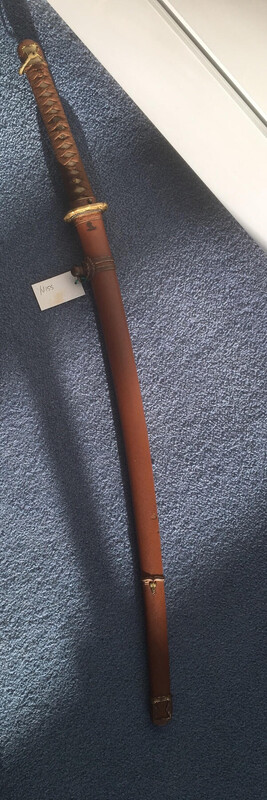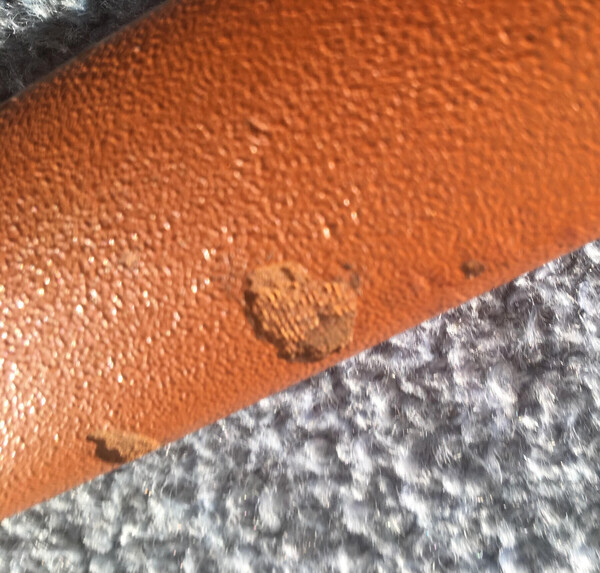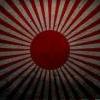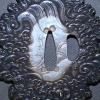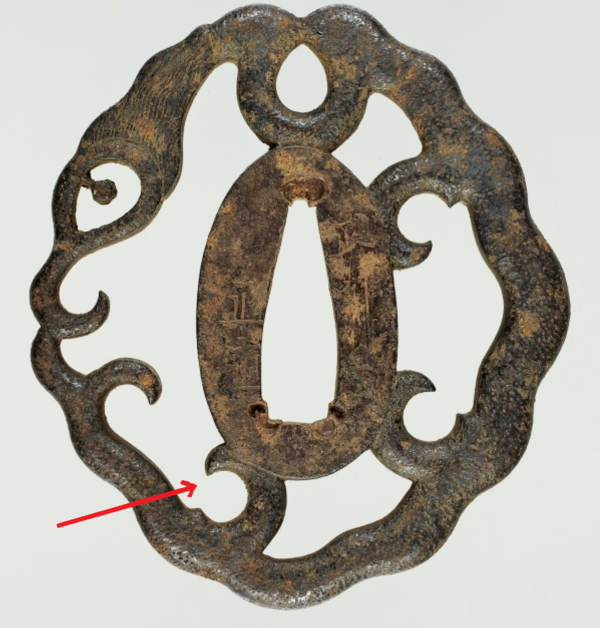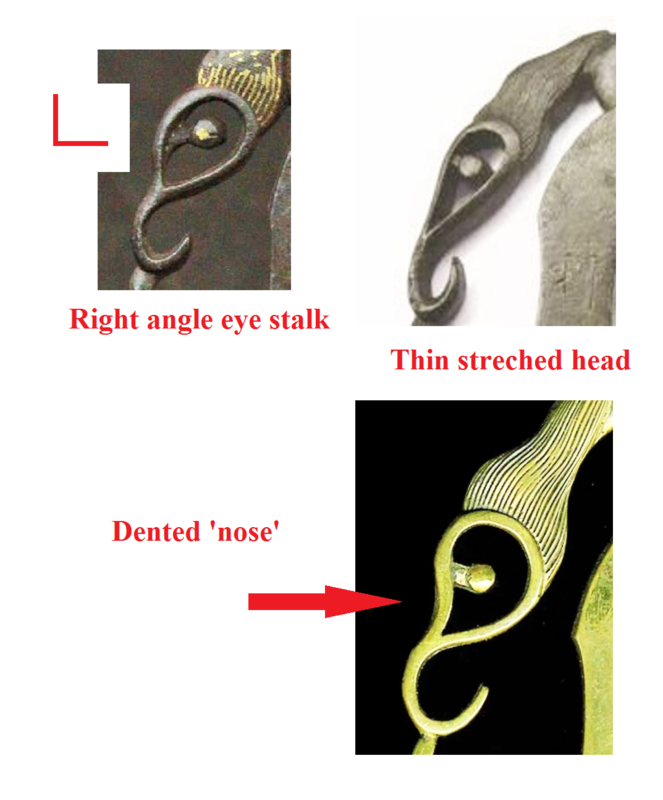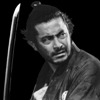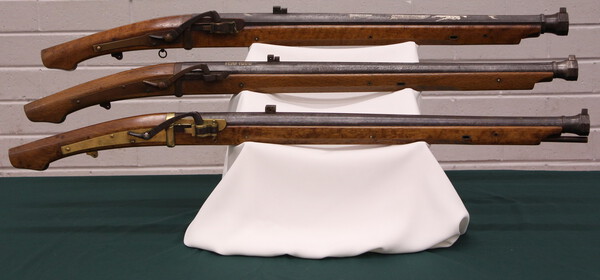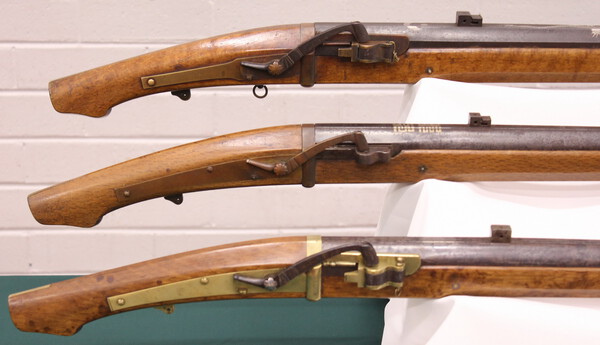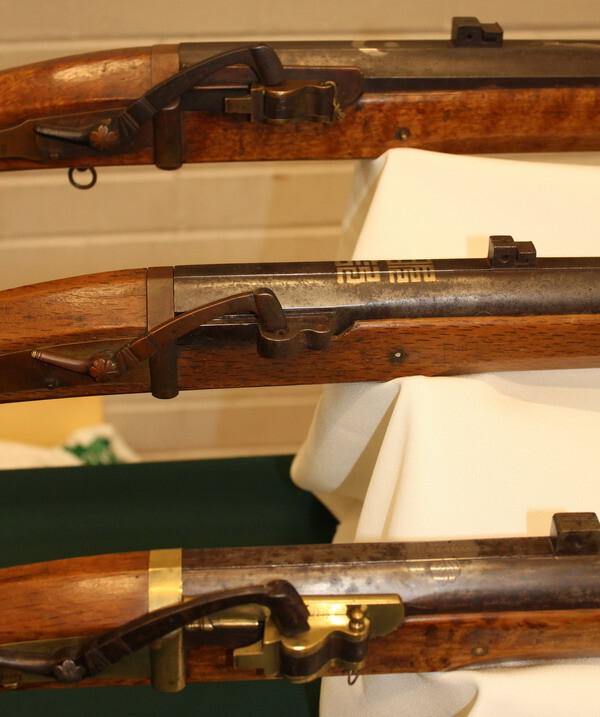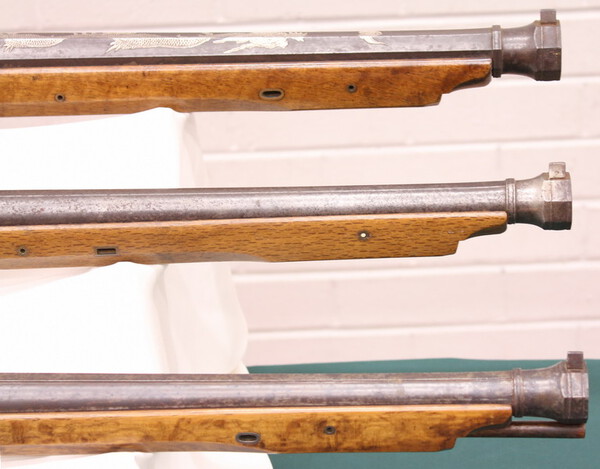Leaderboard
Popular Content
Showing content with the highest reputation on 08/20/2020 in all areas
-
I realize at times I may sound like an elementary school boy with "My father this, My Dad that." However, I'm now to the age I don't concern myself much with what the perception may be, and enjoy many board members sharing their families stories during wwll. I often regret not asking my father more about the details of his wwll military service. It seems as though now, I understand he was way ahead of me as exactly how he was going to address the questions of a young son regarding what he experienced. He mentioned he was in the Philippines, but very little, mostly what I recall of his time in Luzon was over hearing him talking with other Vets. Some of it was quite disturbing. I would also hear him talking about staging in Okinawa, but mostly about the 11th airborne occupation of Japan, and performing guard duty for General MacArthur at the New Grand Hotel in Yokohama. His unit was camped in the Yamashita park, in front of the New Grand Hotel during guard duty. He was also very proud of an exhibition jump he performed with two other paratroopers out of a small aircraft, I believe at Atsugi air field near Yokohama. He traveled to Honshu, then on to Hokkaido where the Amahide sword story begins. By then he had made Sgt. rank and was either in charge, or at least part of a weapons collection mission which entailed several days up the Ishikari river.( I read somewhere there were several thousand swords collected on the island of Hokkaido, which was actually quite surprising to me for some reason.) My understanding was there were at least several hundred swords collected during the Ishikari mission, and the mission participants were given permission to choose a few for Bring backs. Dad was somehow able to acquire, I think, five or more, some of which he gave to relatives before I was born, and have never seen them to this day. One particular sword he told me about in Japan was what I now know was in Buke Zukuri mounts, black Ito and saya, he somehow managed to break the saya , bend the sword, and simply cast it into a pile. Damn, I would love to have seen that one... Long before the internet, my father handed me a bring back wakizashi and Shin gunto and ask me to research them. The Shin gunto, I eventually managed to translate as " No Shu Seki Ju Minamoto Amahide Kitau kore." The Wakizashi papered as a Shin Shinto Jumyo. My younger brother ended up through a flip of a coin with the Amahide, me the wakizashi,of course, I had always wanted the gunto... I moved to Idaho a few years ago, and have always attended estate sales. At one particular sale there were two Shin gunto swords of which I bid and won both.The day before the auction we were able to view the items, the tsuka on one of the swords was going to take a little work to remove, and the owner was understandably reluctant.Oddly, the next day, the tsuka was able to be removed, and I was able to briefly see kanji, but for some reason the characters did not appear familiar to me. After winning the bid and getting home, I once again removed the tsuka and doubled checked the kanji. To my total amazement, it read " No Shu Seki Ju Ichimonji Minamoto Amahide Kitau kore ." Seriously...What are the odds!!! Dave M.6 points
-
At one of the Irish Token Society meetings I decided to give a talk on shingunto, as they are perhaps the most commonly encountered Japanese sword in the English speaking world (due to the widespread dissemination to British, American, and Commonwealth troops during the Second World War). For the meeting I threw together a 'primer' on shingunto, which I thought might also be useful for NMB members too. It's quite basic in terms of the information provided, and which any military sword collector will already know, but it should be helpful for those first encountering shingunto Shingunto.pptx6 points
-
Oeder collection pics from 1916 ! First one is also pictured in my seta bridge article.. https://publicdomainreview.org/collection/photographs-of-Japanese-sword-guards-1916 Best6 points
-
As I was browsing through my Tōken Bijutsu magazines, I noticed some interesting information. I have pretty much just skipped the yearly report as I have seen it mainly as financial stuff etc. and with my limited Japanese skill is not possible to really read it, I know some info that it contains etc. but now I decided to take a closer look on some sections and I was surprised to see how much info is presented in there. I must say I have probably had bit more conservative number about yearly items, I think I have been in somewhat correct ballpark as I have done research based on paper numbers and what numbers pop up to dealer sites in Japan after shinsa. As this is public information posted on Tōken Bijutsu magazine I do think it is ok to post data I translittered to English in here. NBTHK membership is unfortunately quite rare especially outside Japan. I know many people in the west are bit suspicious about NBTHK and there has been some negativity and slander behind the scenes and out in open too. I know people often still bring up some things that happened way in the past, in order to discredit the current organization. I do believe in open discussion and exchange of information, and I do think NBTHK is doing wonderful things for our tiny hobby (as are many other smaller organizations too). Here are the numbers that NBTHK provided in their yearly report, for some reason In Jūyō results number of swords passes is 100% match but other items do not always match the actual number of items passed on results list? But here are the last 5 years of results for you to study and think about. 2019 Hozon Tōken – 7,106 submitted – 4,749 passed Hozon Tōsō – 333 submitted – 186 passed Hozon Tōsōgu – 3,764 submitted – 2,401 passed Tokubetsu Hozon Tōken – 3,317 submitted – 2,259 passed Tokubetsu Hozon Tōsō – 154 submitted – 102 passed Tokubetsu Hozon Tōsōgu – 1,062 submitted – 841 passed Jūyō 65 Tōken – 997 submitted – 101 passed Jūyō 65 Tōsō – 45 submitted – 8 passed Jūyō 65 Tōsōgu – 287 submitted – 29 passed 2018 Hozon Tōken – 7,433 submitted – 4,978 passed Hozon Tōsō – 345 submitted – 177 passed Hozon Tōsōgu – 3,408 submitted – 2,131 passed Tokubetsu Hozon Tōken – 3,372 submitted – 2,342 passed Tokubetsu Hozon Tōsō – 203 submitted – 103 passed Tokubetsu Hozon Tōsōgu – 854 submitted – 604 passed Jūyō 64 Tōken – 916 submitted – 135 passed Jūyō 64 Tōsō – 63 submitted – 7 passed Jūyō 64 Tōsōgu 296 submitted – 23 passed Tokubetsu Jūyō 25 Tōken – 342 submitted – 70 passed Tokubetsu Jūyō 25 Tōsō – 10 submitted – 2 passed Tokubetsu Jūyō 25 Tōsōgu – 41 submitted – 5 passed 2017 Hozon Tōken – 4,257 submitted – 2,880 passed Hozon Tōsō – 199 submitted – 126 passed Hozon Tōsōgu – 2,600 submitted – 1,646 passed Tokubetsu Hozon Tōken – 1,891 submitted – 1,287 passed Tokubetsu Hozon Tōsō – 106 submitted – 66 passed Tokubetsu Hozon Tōsōgu – 629 submitted – 421 passed Jūyō 63 Tōken – 753 submitted – 140 passed Jūyō 63 Tōsō – 35 submitted – 6 passed Jūyō 63 Tōsōgu – 279 submitted – 29 passed 2016 Hozon Tōken – 7,455 submitted – 4,913 passed Hozon Tōsō – 351 submitted – 196 passed Hozon Tōsōgu – 4,123 submitted – 2,753 passed Tokubetsu Hozon Tōken – 2,771 submitted – 1,893 passed Tokubetsu Hozon Tōsō – 135 submitted – 89 passed Tokubetsu Hozon Tōsōgu – 1,022 submitted – 763 passed Jūyō 62 Tōken – 875 submitted – 149 passed Jūyō 62 Tōsō – 54 submitted – 9 passed Jūyō 62 Tōsōgu – 274 submitted – 29 passed Tokubetsu Jūyō 24 Tōken – 326 submitted – 71 passed Tokubetsu Jūyō 24 Tōsō – 10 submitted – 2 passed Tokubetsu Jūyō 24 Tōsōgu – 27 submitted – 5 passed 2015 Hozon Tōken – 6,984 submitted – 4,594 passed Hozon Tōsō – 367 submitted – 218 passed Hozon Tōsōgu – 3,948 submitted – 2,613 passed Tokubetsu Hozon Tōken – 2,450 submitted – 1,648 passed Tokubetsu Hozon Tōsō – 152 submitted – 107 passed Tokubetsu Hozon Tōsōgu – 940 submitted – 754 passed Jūyō 61 Tōken – 826 submitted – 165 passed Jūyō 61 Tōsō – 49 submitted – 11 passed Jūyō 61 Tōsōgu – 277 submitted – 37 passed5 points
-
For the interest of members, an article from 'Morning Bulletin' Rockhampton, Queensland, Australia 15th Feb 1946 titled "Jap Sword Makers Unhappy" https://trove.nla.gov.au/newspaper/article/56434572?searchTerm=Jap Swords Regards Rob5 points
-
3 points
-
Real and old. Mei pic is upside down. I think it's Kanenaga. Sword desperately needs oil and wiping. Pm me your number and I'll call to advise how to care for it. If you come up to Jhb, bring it with.3 points
-
I think lots of things go into Tokujū submission, those that have done it can explain things much better than I can. Darcy has written an excellent blog post on the subject. I do think in general people who will have a go at Tokujū shinsa are often people with great knowledge, and they have done the background work and are prepared for the submission. And of course the item sent in is in most cases very good. Jūyō shinsa (while quite uncommon for average collectors) is still much more relaxed compared to absolute top at Tokujū. I believe It is much lower bar to try a good quality Tokuho item for a chance to Jūyō, where as in order to to pass as Tokujū the item would need to be among the top quality of Jūyō items. Hozon & Tokubetsu Hozon are just bit "generic" as you can see by the numbers of them passing every year. Of course things are not black & white as there are still great items at just that papering level. However on the other hand there are plenty of weak Tokubetsu Hozon items too. I think here in the West we are sometimes too concerned about the level of papers, and often in discussions we bring up the NBTHK papering levels (yes I am often quilty of that too), instead of focusing on explaining the item in other ways. I know it would be convenient to but things in boxes but I think some of the boxes are too big. For example as there is about 1,500 - 2,000 swords passing Tokubetsu Hozon every year, there is lot of different swords in that yearly bunch, and some amazing items will be passing every year, along with some that will barely make it, while the majority will be everything in between those extremes. However all that I am saying must be taken with grain of salt, as what I am writing is purely theoretical. I have not yet submitted a sword into a shinsa by any organization.2 points
-
2 points
-
Hi Mike, To answer your question about which wood to use for shirasaya, you want something with a low acid content. This leaves out oak, which is known for its tannic acid. I think you'd want to work with something a bit softer than a dense hardwood like oak or maple and straight grain will make the work easier. You also want to use a glue that won't tarnish the blade or cause problems if any squeezes into the cavity during glue up. Glue made from sticky rice is the traditional answer. Grey2 points
-
I shall be a bit contrarian here. I know everyone is clapping and congratulating, but I wonder why do people not save a bit more money first, study a bit longer and then buy something a little better? I am not talking expensive swords or waiting too much but a year worth of saving could potentially result in a much better outcome. With a couple of thousand dollars put aside one could buy something they might enjoy more. There are usually very good starter blades on this board or elsewhere, eg Ray and Grey and others sell these occasionally. I hope I do not sound elitist, as this is far from my intention. I merely wish to point out the virtues of patience and checking out blades here or other reputable dealers that come here.2 points
-
I did a rework of the oeder collection a few years back [2017], translated the German text into English and showed every illustrated guard, all descriptions are translated into English, as well there is a collection of tsuba taken from the world travel collection of the Archduke Franz Ferdinand of Austria [who was assassinated sparking the first world war] The book is 100 Pages. "Japanese Sword guards, Decoration and ornament in the collection of Georg Oeder of Dusseldorf 1916" https://www.amazon.com.au/Japanese-Decoration-ornament-collection-Dusseldorf/dp/1364114488 https://www.dymocks.com.au/book/Japanese-sword-guards-and-decoration-and-ornament-in-the-collection-of-georg-oeder-of-dusseldorf-1916-by-d-r-raisbeck-9781364114480 https://www.abebooks.com/9781389339271/Japanese-Sword-guards-Decoration-ornament-1389339270/plp There is a critique by tsubakansho Posted on November 14, 2019 https://tsubakansho.com/2019/11/14/Japanese-sword-guards-decoration-and-ornament-in-the-collection-of-georg-oeder-of-dusseldorf-1916/ The Georg Oeder collection was lost in 1945 when the Russians took Berlin -2 points
-
From many other threads here I think "we" as a forum have concluded that the waks were not necessarily used for submarines, tanks and aircraft but either bought by the government late in the war to make up for lack of sword production or a family heirlooms that special mounts to fit them were for. Here is a link to a thread referring to them as pilot swords2 points
-
Hey guys, well, it was not a big surprise to myself that after the first blade I had to get myself another one if I would see one that appears to be of interest to me. This was one of the cases - especially since it came directly from the vet (or his wife - she turned 97 and moved to a nursed home; he already had died). She didn't care much on his souvenir since it still was in the wooden box in which he had sent it back home. I've attached a few pictures of this box. Someone was researching on behalf of the widow on the blade, mainly because she wanted some money, I made an offer that was accepted. Then it was shipped at beginning of May - and disappeared in tracking at the end of May. Turned up again mid of August, and today finally received it! I was amazed by the fact that inside the wooden box that I said I definitely would want with the blade was a clothing bag in which the blade was stored within a Shirasaya. I've been told this is a Tachi, based on the shape, and that it must had been shortened (based on the amount of holes). Total length is 96cm, blade length is 75,5cm. Yes, there are some small rust pittings on it, unfortunately, but at least the hamon is still visible and otherwise not bad. I wiped it down with oil to make sure the rusting will stop. Looking forward to be educated on what I've purchased and please forgive me my incorrect wording and especially since I'm sure I'll need to look up words that will be used in the replies. So please make them as simple as possible for me to understand ;-). Any ideas on where and when it was made, any features that I should know? And to have made this very clear, I bought this for myself because the ensemble itself was attractive to me and I somewhat got caught with Nihonto as well - hence I'm not selling this! To however find out if I overpaid or underpaid this Tachi it would be appreciated if I would be given feedback where you would place the value of this ensemble. More pics to follow, once I know what you need to see. Most pictures were taken with the DSLR, but also tried with the HighRes scanner, these are the last two pictures. I hope you can see the details that are important. If not, let me know what else I should picture and I'll do my best!1 point
-
Title is self-explanatory, but here's the short story of why I ask: I'm pretty new to collecting swords, and I bought a sad sack of a wakizashi very cheap for the metal fittings. The blade was totally rusted - apparently into place - and the koshirae was wrecked and I think at once time covered in mold. But the fuchi and menuki looked like they might be nice. So I disassembled it, which left me with the fittings (I'm happy with them) and the rusty blade. An abundance of caution later and I decided to either remove the rust or fix it in place, on the off chance it's 1) not as bad as it looks somehow or it's 2) something worth preserving even though it IS as bad as it looks. A search on the forum reveals a way forward. SO, I've spent a good 15+ hours staring intently at this thing's minor details while gently scraping it with an old Canadian penny. And I'm noticing a lot of things that make me think that this was used and VERY abused by a pretty young child, and also that it was *meant to be*. It's messing with me. I've read a few books but don't remember any "Katanas for Kids" chapters, so I'm hoping to get help from the experienced people here: Were swords ever made for children? - Carmen G1 point
-
Int. article.. https://artsandculture.google.com/exhibit/4gLSxw-nMHSyLQ Best1 point
-
Dear Andrew, If I translate Adam's response into polite speech, he is saying that you should be very careful when getting your sword polished. There are very few people (1 or 2) in the US who are qualified to polish swords (even though many claim to be qualified). Those who are not qualified will ruin your sword. You should not use any abrasives or power tools on your sword, just wipe a light coat of machine oil on the blade. The "jagged edged" things are called seppa and yours are very nice quality. When a sword is polished, it is not put back into its original saya (the scabbard) because the saya will have some grit and dirt inside that could scratch the newly polished sword. Therefore, any qualified (or reasonable) polisher would recommend that you get a new shirasaya made for your sword (a simple wooden scabbard and handle without "fittings"). Then the old scabbard and fittings can be restored and will be held together by a tsunagi (a wooden copy of the sword). Often the shirasaya (with the metal blade in it) and original koshirae (scabbard, handle, tsuba, etc. with the wooden tsunagi blade in it) are displayed together (so it looks like two swords to the uninitiated). The really great news is that because the koshirae (scabbard, handle, etc.) of your sword has to be restored some and the blade won't go back in it, you can get almost any fuchigashira (when fuchi and kashira are put together as a word, the "k" changes to a "g") and menuki that you like. The person who restores your tsuka (handle) will be able to make almost any fuchigashira and menuki work. Alternatively, if you want the sword to be back in its koshirae, then you will have to have a new saya made (so it won't ruin your new polish) and you will have to find fuchigashira that work for your blade (once again, the size of the tsuka is less important because it should be remade in the restoration anyway). If I were you, I would contact Ted Tenold (you can find him on this site) for some help. I don't know him personally (and I have nothing to gain by recommending him), but I understand that he is a very honest and helpful person who will probably point you in the right direction.1 point
-
Looks like a 36th series, army contract blade. If you acquire it, double-check the date side and see if it has an M inspection mark. The M can be found toward the top or bottom of the nakago and sometimes both locations will have one.1 point
-
1 point
-
The nakago (tang) appears to have been shortened, they call this suriage. Very cool saya! (scabbard) I'm pretty new here too and this is my first post giving any info about a blade Welcome!1 point
-
Thanks Bruce, Greg and all that enjoyed what I thought would be somewhat of and interesting story. I'm sure there are many others out there with father's and grandfather's with similar interesting tales. I thought I would provide a couple of photos of at least two of the swords mentioned. The Shin Shinto wakizashi is the one which was once in a village along the Ishikari river some 75 yrs ago. The Shin gunto is the Amahide (Purchased at auction) which is in appearance practically identical to the Amahide which was also once in a village along the Ishikari... Dave M.1 point
-
Hi Mike, Just to support Michaels comments and make sure you don't feel alone I must confess that patience isn't my strong suit either and in the past I have allowed enthusiasm to get the better of me. The reality is you can learn the most, most quickly from good quality swords. This is mainly because good work is generally in a good state of polish and all the features it has to offer are clearly visible. Once identified in these better pieces you can then see them more easily in blades in lesser condition. In the past I have seen pieces in very poor condition, out of polish and with no detail discernable being offered as "study piece" I have to ask if you cant see anything what can you study and learn from it? There is no substitute for studying good swords in hand but as a second best seeing as many as you can either in museums (beware though just because a blade i in a museum doesn't guarantee it's quality) and in good images online of which there are an ever increasing number. Then ask a lot of questions. Try and meet up with a local group and talk to people I think there will be many willing to help you.1 point
-
Does anyone agree with the Kanenaga reading? This would be one of the Koto smiths then?1 point
-
Hi Tony, Tsuba is in the Oeder book, page 90, nr. 758 try a quick translation: Tsuba from iron, great. High relief with different metals, on one hand the Sennin Koshohei with his animals and his brother Shoki under the tree on the other hand Sennin Shonken riding on a sword over the waves under a cherry tree, on the left a waterfall Kita-gawa Zengoro, lives in the town Hikone, Omi province, worked with Namban-tetsu probably Soten I Best1 point
-
Yes, look up something called a "Boy's Day Sword" What you'll end up with is a wakizashi-sized blade with katana proportions. Very thin, usually in cheap ornamental koshirae. Posting pictures of everything, including the bare blade will affirm or refute suspicions of origin.1 point
-
Yep, Yukinaga 1658-1661. My guess is that the Koshirae being easily damaged, would not be practical in a combat environment. So my guess is an officer with a desk job may have owned it. And used a family blade.1 point
-
1 point
-
1 point
-
Adam, What I can say factually: There are no known Japanese military uniform regulations that mention such a category for gunto. There are no known mil specs for the design of such a gunto. While on the other hand, we have seen the actual documents that lay out the specs for officer and NCO gunto, and NONE of them allow for waki-length gunto. We have photos of pilots carrying katana-lenght gunto, and none carrying waki-length gunto. We know of the practice of carrying family waki into combat from as early as WWI through the end of WWII. We know of the sword shortages that prompted civilians to donate family blades, waki & katana, and the army program to buy civil swords. So there were quite a large number of waki blades re-fitted for WWII. I have read a story of a young Lt who went to a sword shop to have his long blade cut down because he was short, and he wasn't a pilot or tanker or submariner. as well as a letter written by a surviving professional polisher who stated that swords were made to match the height of the soldier. Were there ever Japanese pilots, tankers, or submariners that carried a waki? Who knows! It is possible. We just don't have actual evidence that anyone did. I personally believe the terms got started from early collectors right after WWII that had no idea what a wakizashi was, so they simply deducted that such a short gunto MUST have been carried be these professions.1 point
-
Dale I cant remember what I paid as it was aprox 5 years ago but Im pretty sure I was happy to pay Grey the asking price. I saw a black iron daisho of this design on ebay but I must've deleted the image sorry.1 point
-
1 point
-
Interesting motivs.. https://publicdomainreview.org/collection/Japanese-firemans-coats-19th-century Best1 point
-
1 point
-
1 point
-
Pure fantasy term to sell swords. Any sword carried in aircraft, submarines and tanks is a 'pilot' sword and the overwhelming evidence is that swords of all sizes were carried by all members of the armed forces. Oh, lovely looking sword too!1 point
-
1 point
-
1 point
-
I think 東塩子 is actually a gō ( possibly read Tōenshi), rather than a place name. The second character looks like 與 to me, which is read as 'yo' or 'tomo'.1 point
-
No. I suspect they are from the average waki bought up by the govt during the shortage and issued.1 point
-
Hi Grey, In gold - 黒坂義知應需 - Kurasaka Yoshimoto ōjū - Responding to Kurasaka Yoshimoto's request. I'm a little less confident of this bit: 東塩子 - Higashi Shiogo - a place name I think. 源 一 造之 - Minamoto [ ] Kazu (maybe read Ichi) Tsukuru Kore. I'm missing the second kanji on this line. Sorry for the mixture of fonts.1 point
-
Thanks so much Greg, I must admit I have had the image of your guard for a few years now. Out of interest did you pay the asking price? The other examples I have not seen before. At the moment I have over thirty examples as a data base [ four examples of my own ], Although they are all the same general design there are a few anomalies I have found. You will notice one of the curls on this example goes in the opposite direction to almost all other examples [I have found only two like this]. The 'mane' is sometimes thinner and the stalk of the eye ball can stick out at a different angle. A lot are signed Toshimasa but some are signed by other smiths and a number are mumei.1 point
-
Can you imagine the heaven the few were in who were already Japanese sword collectors or students before the war? There were a few, and they must have had an awesome time buying and trading. Can you imagine being there and knowing something?1 point
-
You can't just varnish away a mei and assume the NBHTK will look elsewhere and return a papered sword. Imagine what happens when you remove your varnish: sword is both mumei (on paper) and zai (in reality). I don't know where this idea comes from but it's one that needs to go straight to the dustbin. As for this gimei sword, if someone studies the post history of the owner, I'm not even convinced its a real person. Not clear what's going on here, but I have a feeling the fraudulent scheme extends beyond the gimei + green paper combo.1 point
-
I think mei is 一刀斎安綱作 - and smith Ittōsai Yasutsuna. He was born 1924 and died 1990. Here is one reference sword: http://kako.nipponto.co.jp/swords2/KT215546.htm1 point
-
I’m curious Rayhan, I'm not asking your salary or anything, but what do you do for a living? I see some people here, not just you, who seem to buy a new sword every week/month when I struggle to finish the month and can only use lay off payments. No offense meant, but your words remind me of the words of politicians who’ve been living in a sphere so far off that of common, average people that they clearly lose the ties to reality. Your opinions are only sound if you can afford the type of swords you’re mentioning. Art (provided that even exists as I don’t believe in art but just in craft) comes in many forms and at every price. A guy who will collect a page from a comic book artist he likes and paid a few hundred dollars for will probably Be as happy as the guy who just bought a Picasso. Actually, he’ll probably be even more happy because the Picasso buyer will probably put the Picasso in a safe and consider it as an investment (of course, who, with a sane mind could ever consider a Picasso on his wall except if he wants to barf everyday... in case you haven’t understood I HATE modern art ) Should this mean that the regular joe be prevented from his pleasures just because he can’t afford the best?1 point
-
Ray, Hope my post did not come across as criticism. I genuinely wanted to speak for others out there in a similar situation, and find out if there is a place for them/us. I think it is precisely because I stay firmly grounded that my Jen situation is always under control. Reality guides my purchases. But I think I speak for many. And of course you are allowed your (valid) opinion as long as it remains a civil discussion. I enjoy reading these posts. But I speak for the average guy out there too. As for the lovely Aizu katana, it remains my only papered sword. It, and a wonderful katakiriha zukuri waki by Tsuguhira from Darcy remain my 2 favorite and best swords. I treasure them. When I typed above, I specifically mentioned really good swords, meaning stuff like Ichimonji and Aoe etc etc. those that go for $20k+ No, I will never sell these swords. No matter what happens. They are not investments or money storage. They are things that make me happy.1 point
-
Ray, I’m interested in where you place the guy who will never be able to afford a $5000+ sword? Should he stop studying? Stop collecting? What if he owns a few $1000 blades collected over 10 years, and has the passion, just not the funds? Where is his place in the grand scheme of things? Take myself as an example. I’ll never own a very good sword. Doesn’t matter how much I put away for 5 years. If I ever found myself with $5000+ I’d be obligated to put it on the house. Do some needed repairs. Get better medical aid. A million sensible things. A few thou over the years was possible at the right time. But a big purchase will never happen for logistical reasons. I point this out because many members may be in the same boat. When currencies sit at 17 to $1, sometimes reality means we will never own really good stuff. Doesn’t mean we don’t appreciate it though. Or study it. But where do you place those collectors? Those for whom $10,000 is not a lot clearly are able to look at this all from a different point of view. Here, and in many places, $100,000 buys a really decent house. No ways will guys in that situation be able to throw that at a sword. Or even 1/10 of that, which is a house deposit. Should guys like that give up collecting?1 point
-
Mike, that's correct. No fittings included. I have a small woodshop and had entertained the idea of trying to make a (very non-traditional) shirasaya for it, but that may be a waste of time. This is just for study and my own edification in the wonderful world of Nihonto1 point
-
1 point
-
Congratulations XXX, on your newly acquired teppo. (The board requires your posts to end with a real first name and at least the first letter of your last name.) Not really easy to photograph them. Can you get some lighter and closer shots of the lockwork, etc.? The Mei shot would be best upright with the Bisen breech screw towards you. (The zogan on the barrel is generally least important, except for the commercial aspect.) It would be great if you could measure the internal barrel diameter in centimeters if possible, the overall length and length of the barrel, any details of the Bizen breech screw, etc. There is very little known about the great majority of individual gunsmiths, unlike swordsmiths. Your smith, however, a descendant of the first Tayosuke, was a 四人方鍛冶 Yonin-gata Kaji (not sure about the Romanization) in Kunitomo, and made among others a 50 Monme gun which is in the Nagahama Museum, apparently. Another, a comparatively large-bore 5-Monme 'Dragon in Clouds' pistol is recorded as being in the possession of a Mr Yoshioka. No barrel dates for this smith are given in the written records as far as I know, but we can probably assume 1810-1850 to start with. More detailed photographs might help assign an earlier or later slot in history. The first Tayosuke is listed as a disciple of 丹蔵 Tanzo, and there is one gun made by Tanzo dated at Meiwa 8, or 1772. Imagine a working life of... +/- 30 years with overlaps? Smiths in order: 1. Kunitomo Tanzo 2. Kunitomo Tayosuke 多与助 or 太与助(disciple of Tanzo) 3. Kunitomo Tayosuke Katsumasa1 point


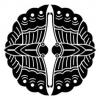


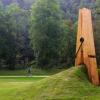






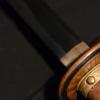














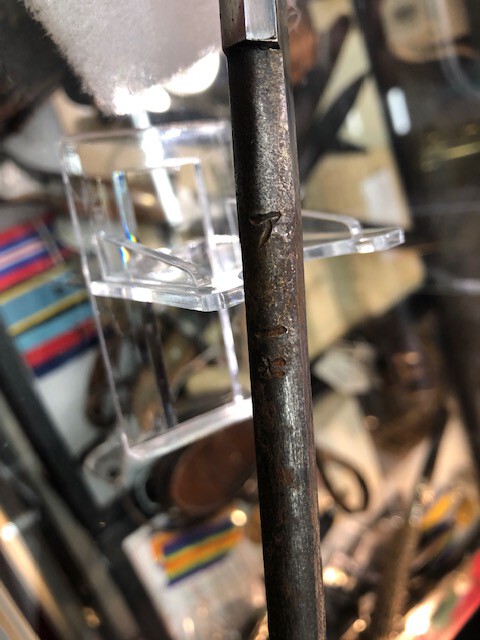
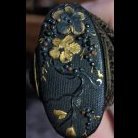

.thumb.jpg.3b144d71a8717332625108a5adb1efbd.jpg)
